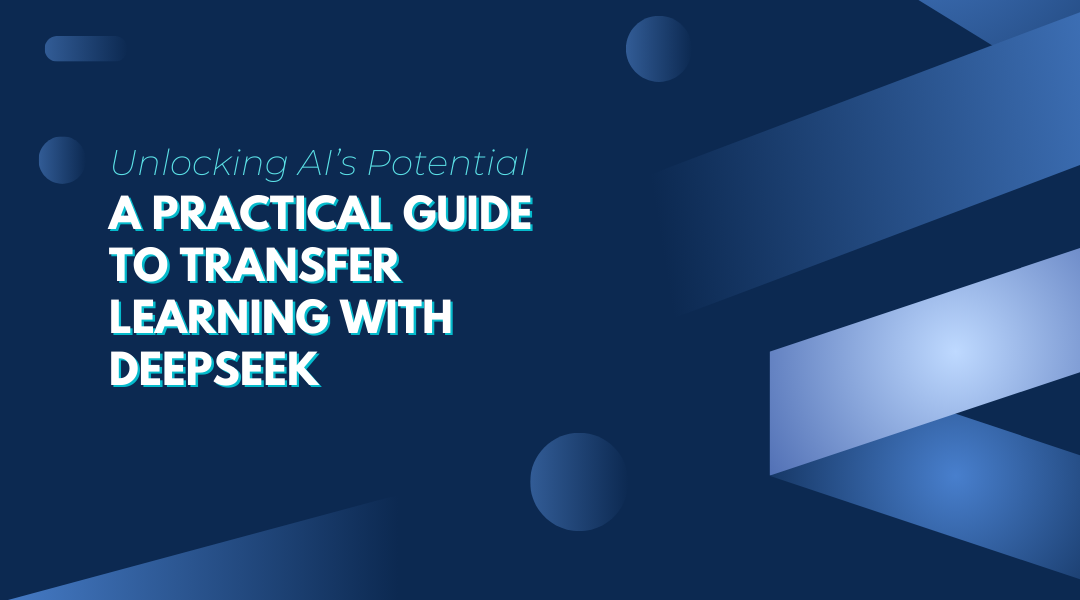Imagine you’re learning to play the guitar. You wouldn’t start from scratch if you already knew how to play the piano—you’d build on your existing knowledge of music theory, rhythm, and finger coordination. That’s exactly what transfer learning does in artificial intelligence. It allows models to leverage knowledge from one task to excel at another, faster and with less data.
In this section, we’ll explore how DeepSeek AI uses transfer learning to make AI development more efficient, accessible, and powerful.
Why Transfer Learning Matters
Training AI models from scratch is like building a car engine by hand—it’s time-consuming, expensive, and requires massive amounts of data. Transfer learning changes that. Here’s why it’s a game-changer:
- You Don’t Need Endless Data
Instead of requiring millions of labeled examples, transfer learning lets you achieve great results with hundreds or thousands. This is especially useful in fields like healthcare or law, where labeled data is scarce. - Faster Development Cycles
By starting with a pre-trained model, you skip the initial training phases, which can take weeks or even months. This means you can iterate and deploy solutions much faster. - Better Performance, Sooner
Pre-trained models have already learned useful features—like edges in images or grammar structures in text. This head start often leads to better performance, even on new tasks.
How Transfer Learning Works in Practice
At its core, transfer learning involves taking a model trained on one task and adapting it for another. Here’s how it breaks down:
Step 1: Choose a Pre-Trained Model
DeepSeek offers models pre-trained on diverse tasks—image recognition, language translation, sentiment analysis, and more. Pick one that’s relevant to your goal. For example, if you’re working with medical images, a model trained on general images might still help, but one trained on X-rays would be even better.
Step 2: Adapt the Model
This is where the magic happens. You can:
- Freeze early layers: Keep the foundational features (like basic shapes in images or common word embeddings) unchanged.
- Fine-tune later layers: Adjust the higher-level layers to specialize in your task.
- Add new layers: Append custom layers for task-specific outputs, like classifying different types of defects in manufacturing.
Step 3: Train on Your Data
With the adapted architecture, you train the model on your dataset. Because the model already understands general patterns, this training is faster and requires less data.
Overcoming Mismatches: Inputs and Outputs
Sometimes, the pre-trained model isn’t a perfect fit. Here’s how to bridge the gap:
When Inputs Differ
If your data doesn’t match the pre-trained model’s expectations—for example, higher resolution images or different text lengths—you can:
- Resize or preprocess your data to fit the model’s input requirements.
- Use data augmentation to artificially expand your dataset with rotations, flips, or paraphrases.
When Outputs Differ
If the pre-trained model was designed for a different output—say, classifying 1000 image categories when you only need 10—you can:
- Replace the output layer to match your task.
- Choose a new loss function tailored to your goal (e.g., cross-entropy for classification, mean squared error for regression).
Real-World Examples
Let’s look at how transfer learning is applied in different scenarios:
Example 1: Medical Imaging
A model pre-trained on natural images (like photos of animals and objects) can be fine-tuned to detect tumors in MRI scans. The early layers already know how to identify edges and textures—skills that transfer directly to medical imagery.
Example 2: Customer Support Chatbots
A language model trained on general text can be adapted to understand domain-specific jargon in banking or tech support. By fine-tuning on labeled chat logs, it learns to handle queries like “How do I reset my password?” or “What’s my account balance?”
Example 3: Agricultural Monitoring
Drones capture images of crops, and a model pre-trained on satellite imagery can be fine-tuned to detect signs of disease or drought. This helps farmers take action before problems spread.
Practical Tips for Success
To make the most of transfer learning:
- Pick the Right Base Model
Choose a pre-trained model that aligns with your task. For images, ResNet or EfficientNet are great starters. For text, BERT or GPT variants work well. - Start Small
Begin by freezing most layers and only training the last few. Once you see progress, you can unfreeze more layers for further fine-tuning. - Monitor Closely
Keep an eye on performance metrics during training. If the model isn’t improving, try adjusting the learning rate or adding more data augmentation. - Don’t Overfit
Use a validation set to ensure your model generalizes well to new data. Regularization techniques like dropout can help prevent overfitting.
Conclusion: Working Smarter, Not Harder
Transfer learning isn’t just a technical trick—it’s a philosophy. It’s about building on what’s already been learned, rather than reinventing the wheel every time. For developers, researchers, and businesses, this means faster innovation, lower costs, and more reliable results.
With DeepSeek AI, you’re not starting from zero. You’re starting from experience—and that makes all the difference.
So whether you’re classifying images, translating languages, or predicting trends, remember: the knowledge is already out there. You just need to adapt it.
